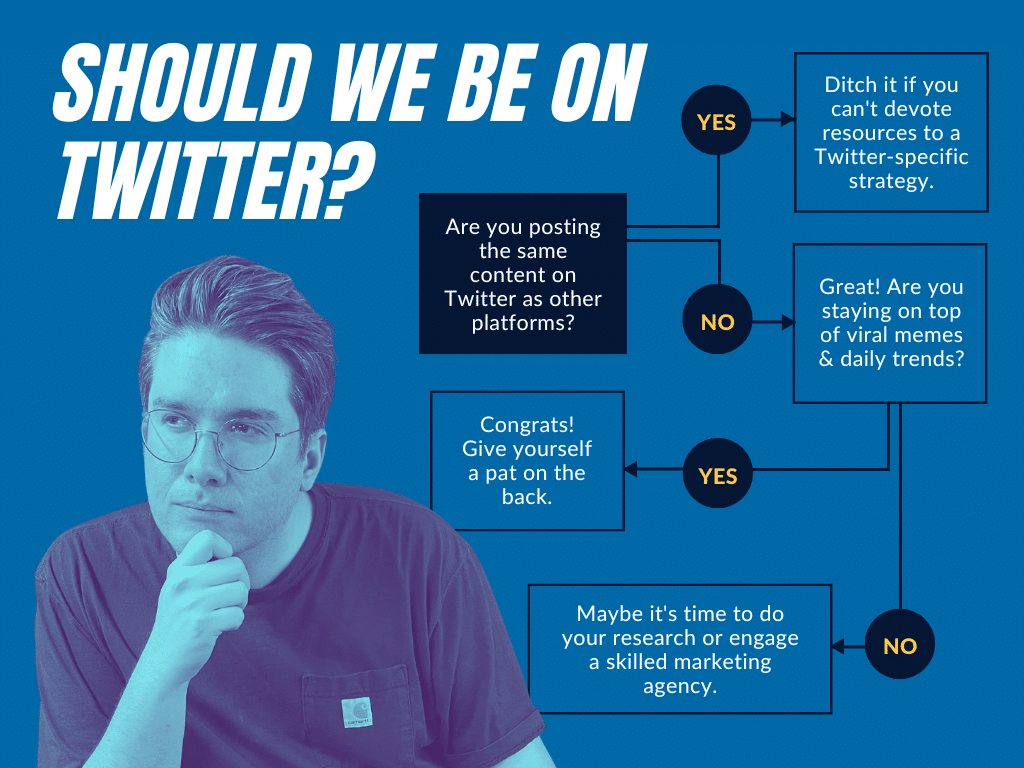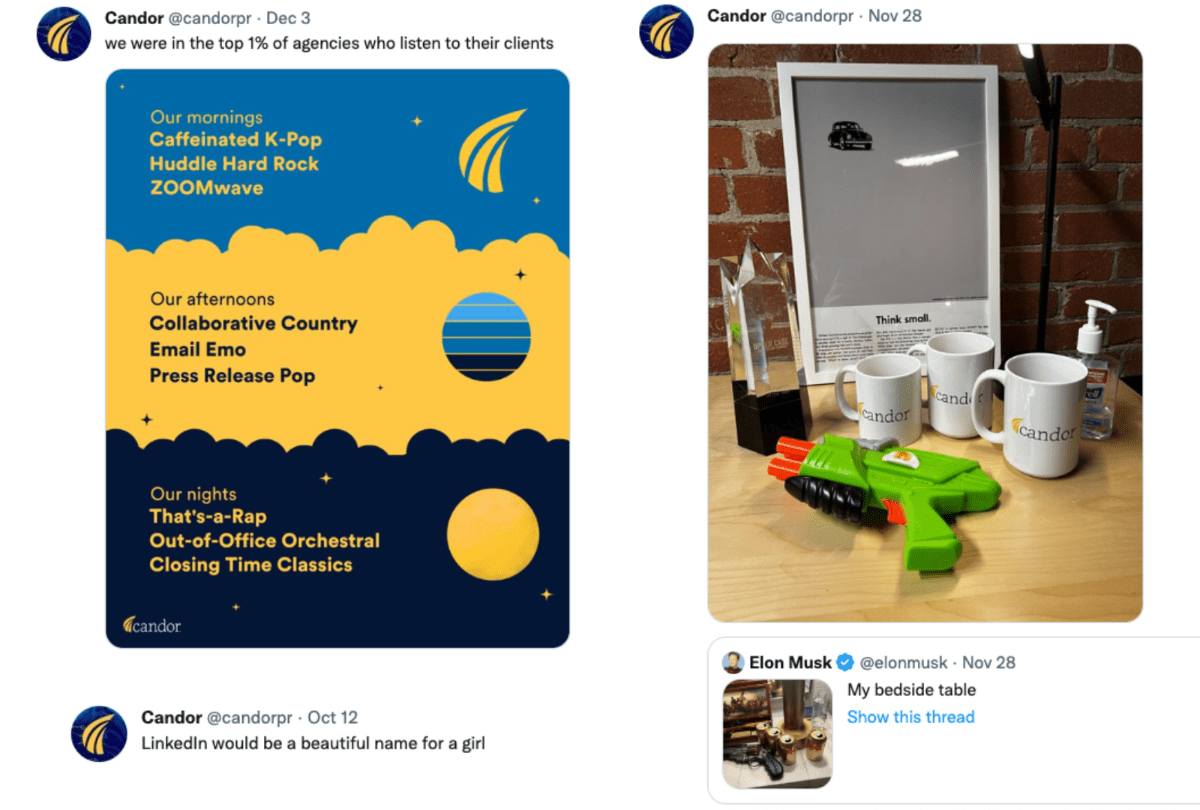It’s no secret Twitter is in a fiery downward spiral — advertisers are jumping ship left and right, long-time active users are saying sayonara and the platform’s rise in hate speech (and Twitter’s firing of its entire human rights team) is literally fueling genocide in war-torn countries.
So… why in the WORLD would any brand remain on Twitter?? The answer: because those that stay know how to talk the talk, and they know how to do it well.

Candor’s advice is simple: memes, man. Twitter has long been fueled by meme culture (and it’s gotten crazy in the post-Musk era) — in fact, it’s practically the platform’s official language. Brands which lean into this strategy are seeing newfound success on Twitter (hi, @OKWildlifeDept) and earning opportunities to connect with fresh audiences.
Here are a few examples where Candor’s social media team dove down the Twitter rabbit hole:

Twitter users have a specific language. For brands to communicate their message or make an impression on Twitter, they must speak that language. If it aligns with your brand, it’s okay to take your content out of bounds. If it doesn’t make sense for your brand to get a bit weird, then at the very least, listen. Understand what the Twitter-topic-of-the-day is and determine if it makes sense for your content. A brand can get roasted easily on Twitter.
Tossing up the same post on Facebook and LinkedIn is safe, but it’s not going to accomplish much. As an agency, our goal is to demonstrate we understand the differences of all the social platforms. Twitter is a weird place with weird people and it’s a perfect place to experiment outside of the box.

